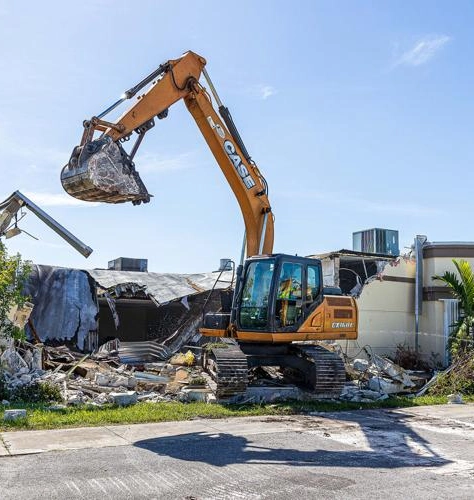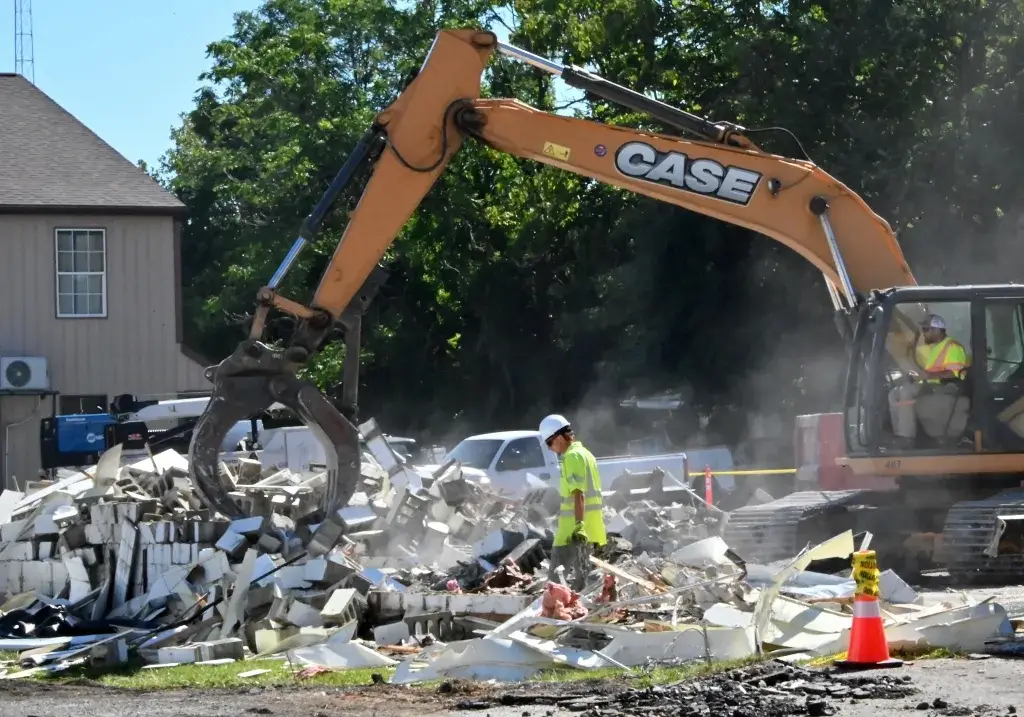Building demolition projects require careful planning, specialized demolition equipment, and above all a strong emphasis on safety. To ensure the job is completed effectively and to reduce the chances of accidents, it’s essential to adhere to specific guidelines and precautions.
Follow our tips to reduce the risk of dangerous situations on building demolition projects.

Conduct a thorough site assessment:
Before commencing any demolition work, it’s crucial to conduct a comprehensive site assessment. Identify potential hazards such as unstable structures, hazardous materials, and environmental risks. Assess the surrounding area for any utilities, neighboring buildings, or public spaces that may be affected by the demolition activities.
Develop a detailed demolition plan
A well-defined demolition plan is the cornerstone of a safe and effective project. Outline the sequence of demolition activities, including the methods and equipment to be used. Consider factors such as structural integrity, debris removal, and environmental impacts. Ensure that all personnel involved in the project are familiar with the plan and understand their roles and responsibilities.
Choose the right demolition equipment
Utilizing demolition excavators, hydraulic breakers, loaders, and other types of equipment and attachments is a key part of successfully completing demo projects. It’s important to only use hydraulic breakers, shears, and pulverizers that are compatible with your demolition excavators or other carriers. Operators should be well trained and inspect all machines before beginning work each shift to look for visible signs of damage or abnormal wear. It’s also important to find out the maximum height of the site you are demolishing and type of material. This information will help you determine if you need higher reaching demolition excavators or more powerful hydraulic breakers.
Develop a comprehensive safety plan
Prioritize safety at all times by implementing appropriate safety measures. Erect barriers and warning signs to restrict access to the demolition site and prevent unauthorized entry. Provide personal protective equipment (PPE) such as hard hats, safety goggles, gloves, and hearing protection to all workers. Implement fall protection measures for personnel working at height and ensure that scaffolding and other temporary structures are secure.
Monitor environmental factors
Consider environmental factors such as weather conditions, air quality, and noise levels during demolition activities. Monitor weather forecasts and adjust work schedules accordingly to minimize risks associated with adverse weather conditions. Implement dust suppression measures to control airborne particles and minimize environmental impact. Monitor noise levels to ensure compliance with regulatory requirements and minimize disturbance to neighboring properties.
Contain and control dust and debris
Dust and debris generated during building demolition work can pose serious health risks to workers and the surrounding environment. Implement effective strategies to control and minimize dust, such as wetting down surfaces, using dust suppression equipment, and enclosing the work area with appropriate barriers. Regularly monitor air quality to ensure a safe working environment.
Proper waste management
Develop a waste management plan to handle demolition debris and hazardous materials safely. Sort and segregate materials for recycling or disposal according to local regulations. Use appropriate containment measures to prevent contaminants from spreading and causing environmental damage. Consider partnering with certified waste management companies to ensure proper disposal of hazardous materials and recycling of salvageable materials.

